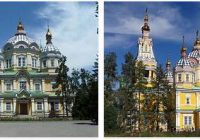Kazakhstan Landmarks
Take a group tour to Kazakhstan, which is located in Central Asia but a small part (about 5.4% of the surface) is in the far east of Europe! Explore this large, partly untouched land and its nature reserves, reserves, the very diverse nature, flora and fauna. You can also visit one of the many health… Read More »

